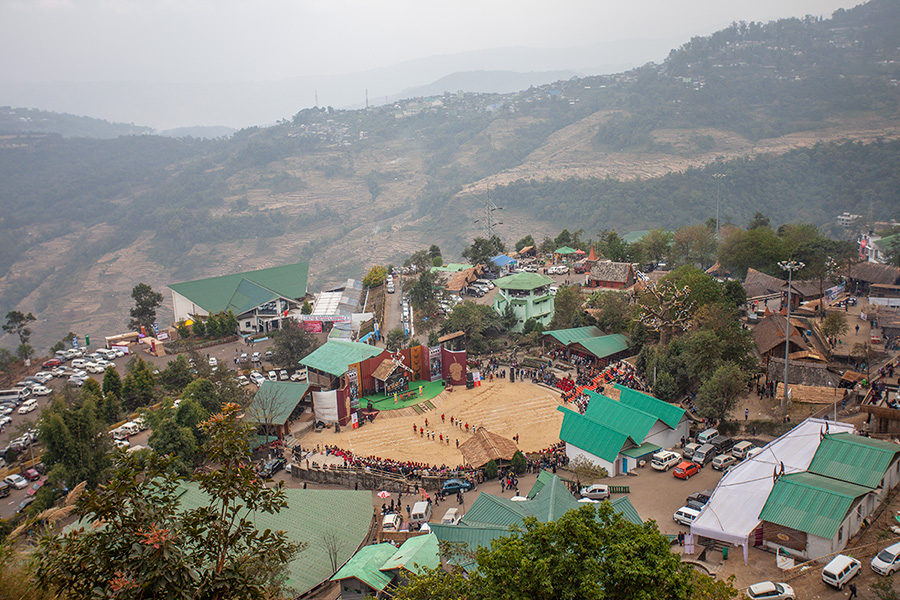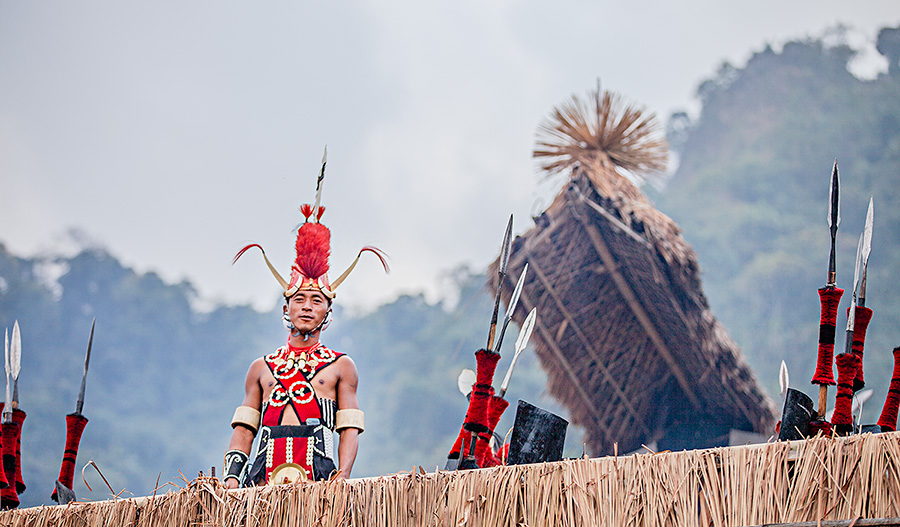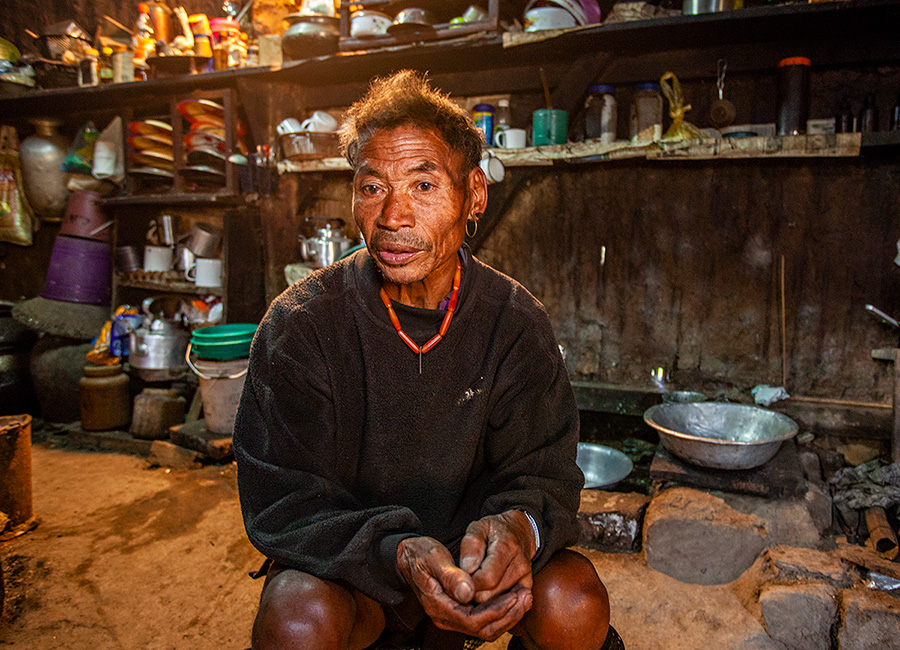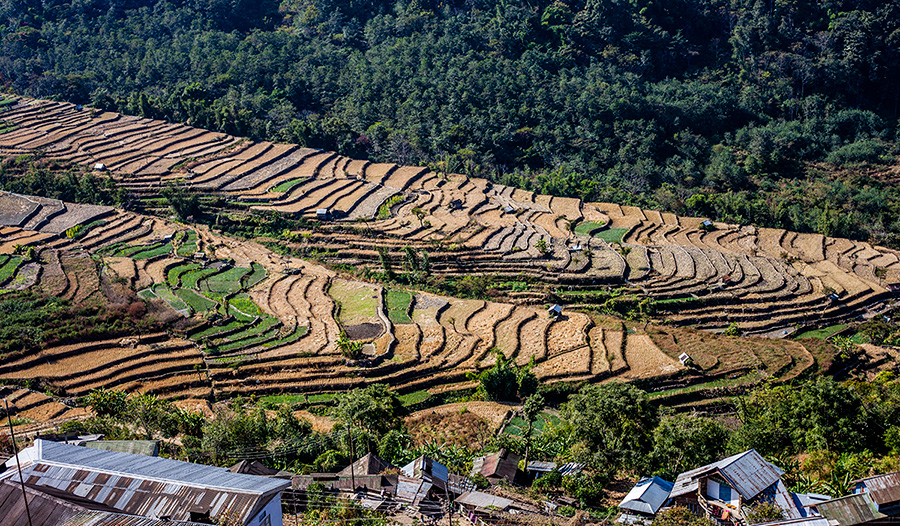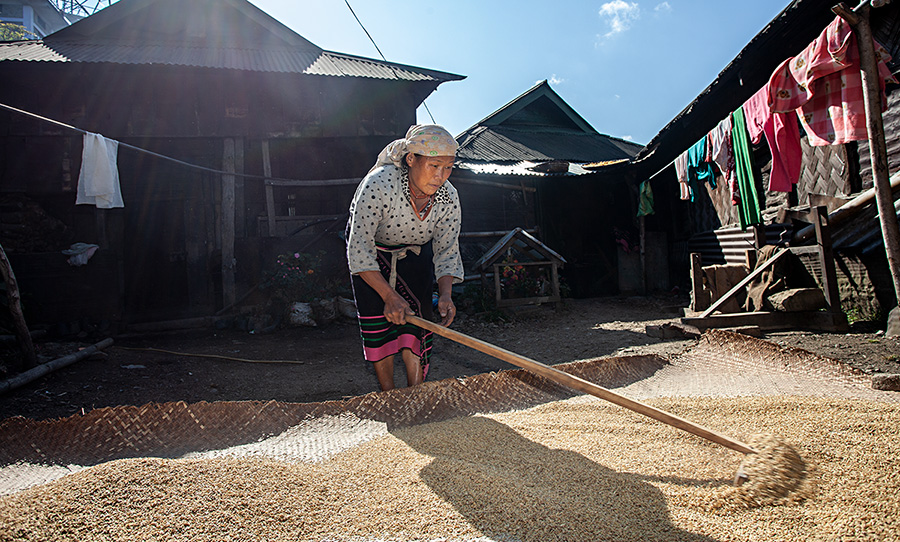This story on the people of Nagaland is written by Mirza Zulfiqur Rahman, who is is one of the tour leaders on our ‘Photography Tour – North-East India and Hornbill Festival‘. Mirza holds a PhD in humanities and social sciences from Indian Institute of Technology, Guwahati, and works as an independent researcher and writes on various topical issues relating to Northeast India and the international neighbourhood. His in-depth understanding of the region helps us in connecting in depth with people of the region during the tour, and gets us to understand better about the culture and practices of people and the region we will be photographing during the tour. Join us on this exciting tour this December.
Text by Mirza Zulfiqur Rahman; photographs by Arun Bhat.
The undulating hills of the Patkai Ranges that encompasses Nagaland has in its fold marvelous stories of traditional life and livelihood, of wisdom connected to nature. The imagination of these undulating hills is in the rolling nature of its wavy rise and fall, marking the geographical expanse bordering India and Myanmar. Nagaland is home to 17 major tribal communities, a vivid snapshot of the diversity that spreads across South and Southeast Asia. Nagaland is often called by its state government as the ‘Land of Festivals’, which organizes the annual Hornbill Festival every first ten days of December, marking its statehood day celebrations. This is apart from the traditional festivals that each community in Nagaland celebrates at various times of the year. It is the Hornbill Festival that Nagaland is well known for, in recent times.
However, the Hornbill Festival is just one event. Nagaland is a rolling story in itself. The Nagas have for many generations over centuries passed on their stories of traditional life and wisdom through oral stories. This aptly imitates the rolling landscape and the vivid imagination of the communities towards elements of nature and life. The community is the backbone of Naga society, and their oral history forms the base for their fiercely independent and resilient heritage. Each village was considered a republic in itself, deeply embedded in their traditional institutions of self-rule and governance. The wisdom of the elders as repositories of the oral traditions and stories of their village is taken as the base for a community-driven life. It is in these stories that one can learn of sustainability in nature and community life.
Khonoma and Dzulukie are two Angami Naga villages, about an hour’s drive from Kohima, the state capital of Nagaland. Khonoma is relatively bigger and famous than Dzulukie, because of its history of the Anglo-Khonoma Wars that it fought with the British, and the Naga National Movement started here under Angami Zapu Phizo. However, it is the spaces between Khonoma and Dzulukie that hold myriad testimonies of the traditional Angami life-worlds. The alder trees that are harvested for firewood by the community in such a manner that they regrow within two-three years, has deep roots which marks as natural boundaries of farms without any need for fences, and fixes nitrogen, is just one example of the sustainable practices followed by the Angamis. The splendid terraced rice fields are another example here.
The Angamis rear mithuns in their community forests, which is considered the state animal of Nagaland. The farmers spend days in the forests tending to their mithuns, and most herds are owned collectively by families or are community owned. The Angami Nagas are traditionally involved in hunting, however, in the 1980’s, when the effects of modern-day impact of human interventions started showing, Khonoma set aside a substantial portion of their community owned forests as a designated conserved sanctuary. It is known as the Khonoma Nature Conservation and Tragopan Sanctuary, and is one of the rare instances where the community themselves took the initiative and set an example in conservation. This comes from a deep sense of understanding from traditional community wisdom and knowledge of nature and life.
It is in these spaces that the immersive experience of the traditional Angami community life is exemplified. The crackle of the jhum fires in the forests, employed for the purpose of slash and burn or swidden cultivation, does not signify degradation of the soil, it rather signifies the pulse of the traditional way of farming that the Angamis have been practicing across generations, known through oral stories. Children learn about the ways of nature and conservation from a very young age, and the social structures are well equipped for such life and skill based education to be imparted effectively. The children are distributed in ‘age-groups’, which are assigned older mentors for the rest of their adult life, and it is in these spaces of community life, that the traditional wisdom and knowledge is imparted to the next generation.
The community is very closely knit together and the community bonding and social capital that is thus generated makes for the resilience of traditional knowledge systems. The spirit of togetherness for life in ‘age-groups’, for instance, cultivates that sense of belonging and social awareness and active participation. The good harvests bring along with them community feasts, which families offer to the community as gratitude, and there are special spaces in the villages for such community feasts to take place. The homes and hearths of the community are always open and inviting, and this portrays a very liberal and open society, which take pride in its community and in the essence of sharing. This openness encapsulates the spirit of Nagaland, it has a lot to offer to one who is ready to immerse in its undulating hills.

